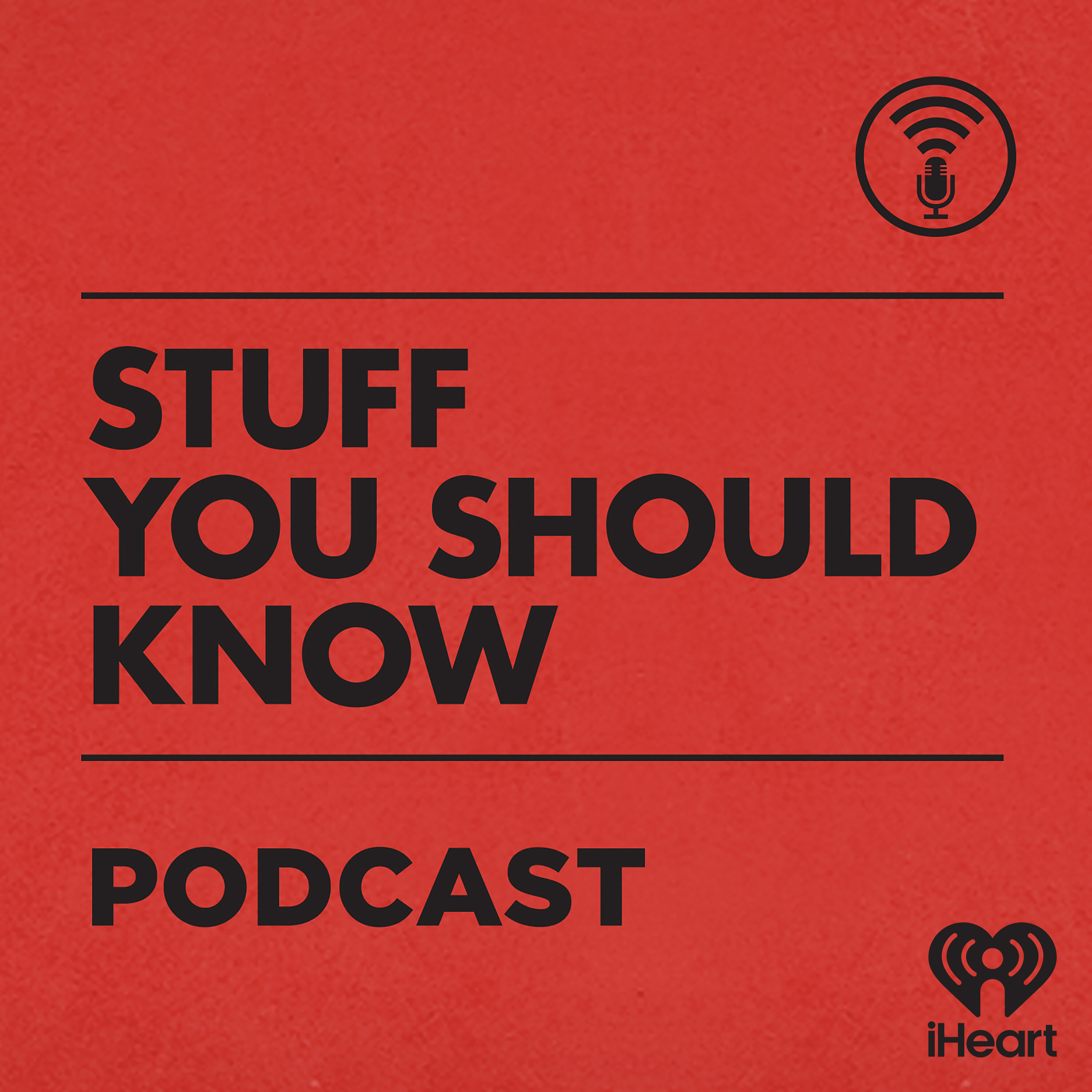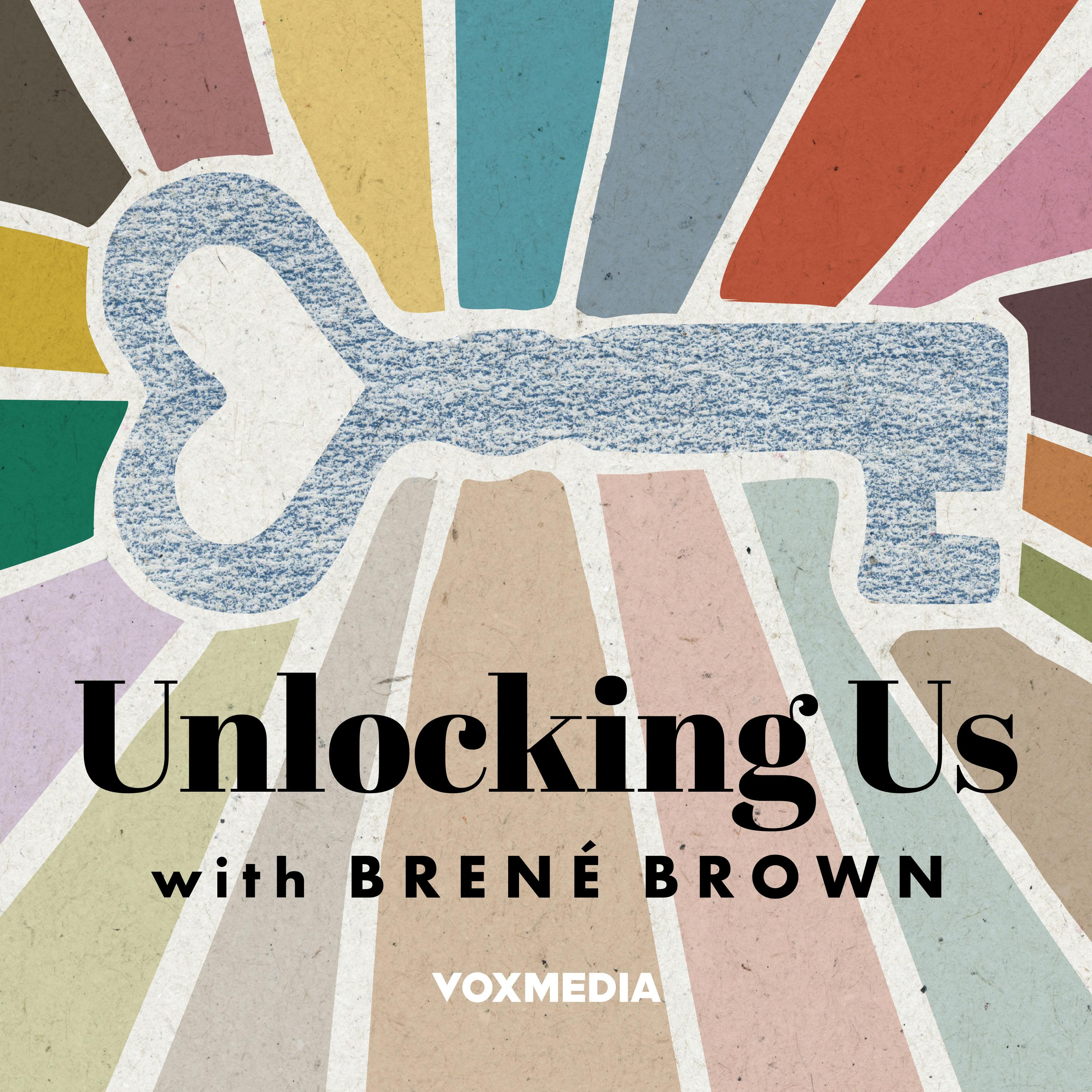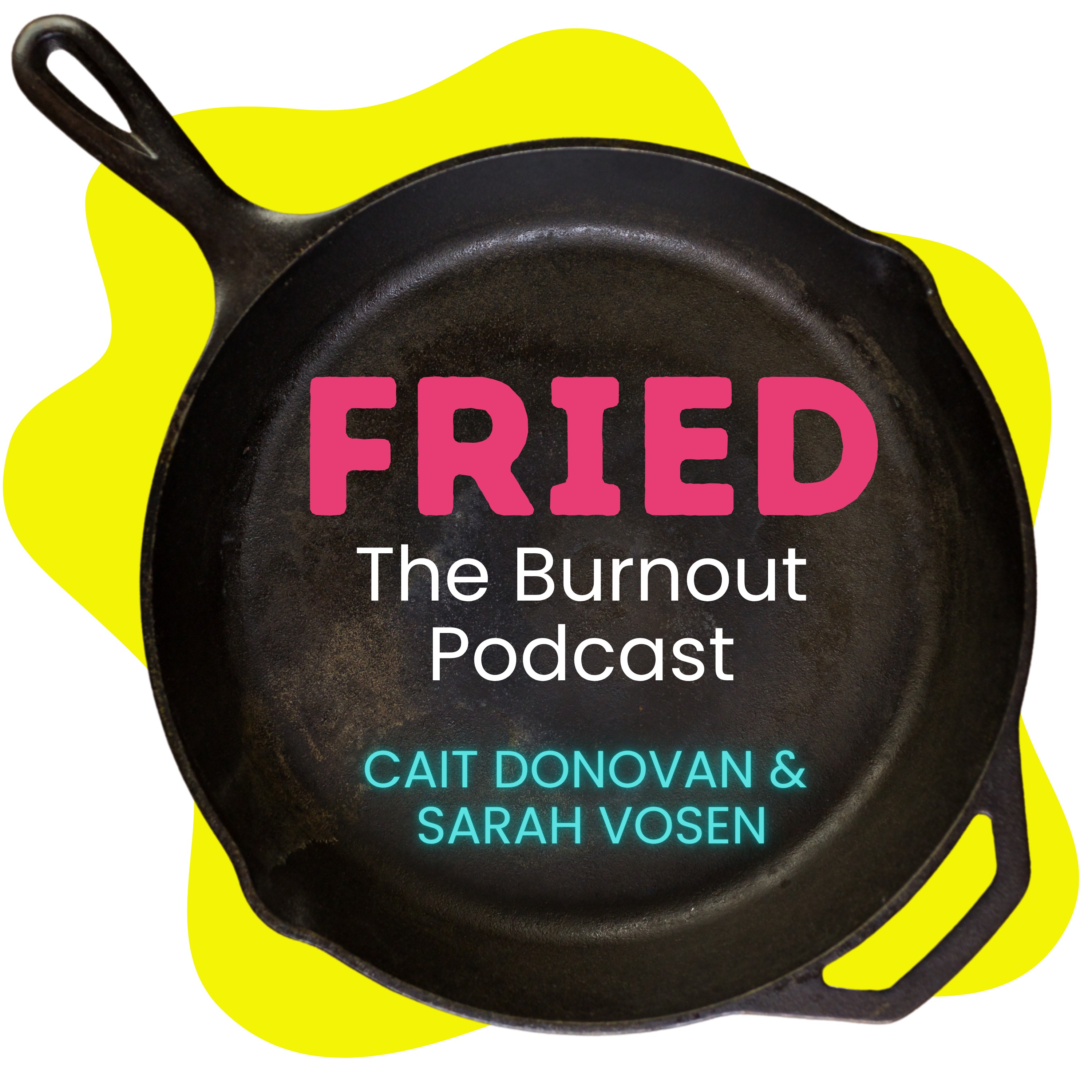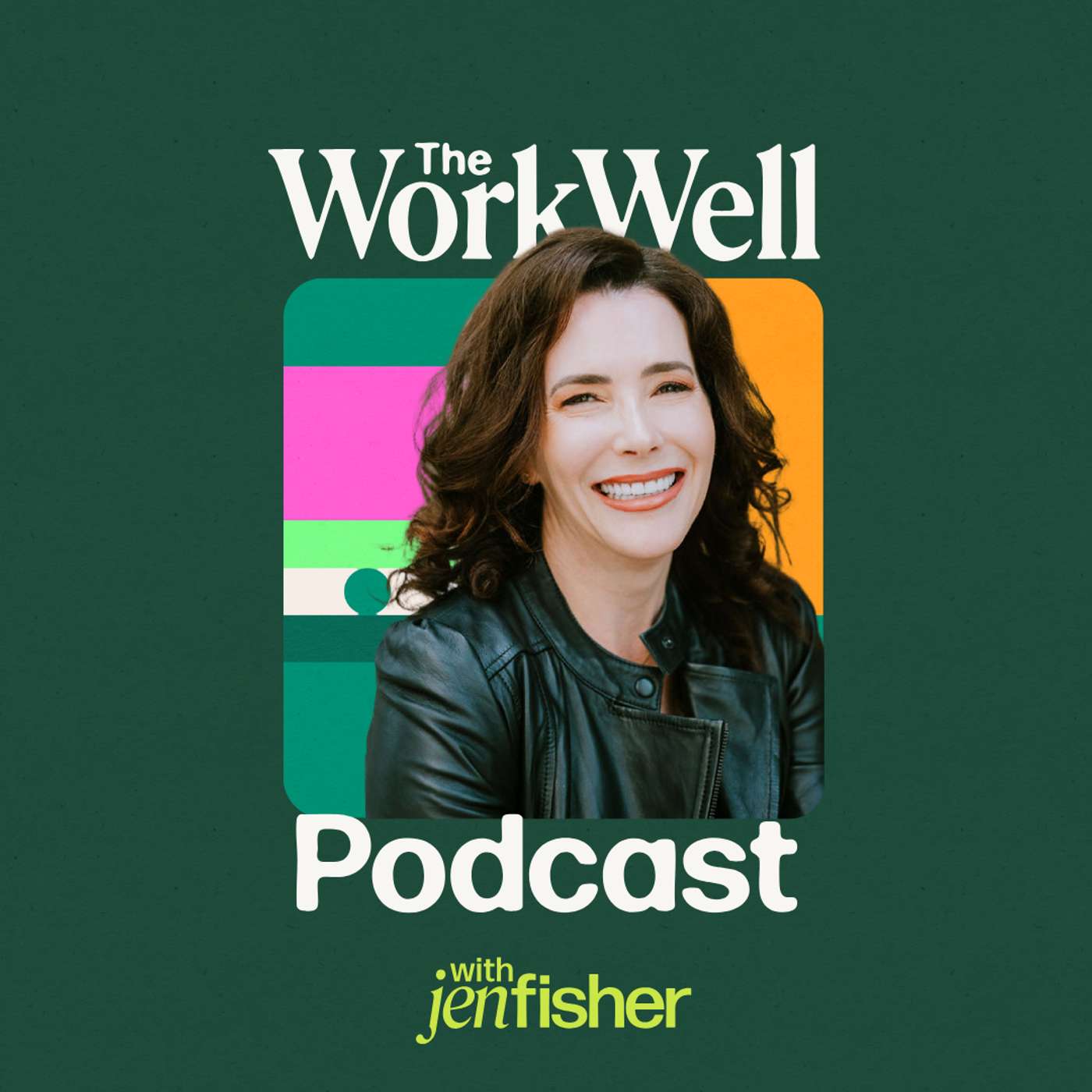
The Balanced Badass Podcast®
The Balanced Badass Podcast® is the show for high-achieving professionals who want to prevent burnout, master work-life balance, and stay badass without losing their sanity.
Each episode, we’re not just tackling your overflowing calendar and keeping your household on track; we’re getting into burnout prevention and recovery strategies so that you have time to breathe, laugh, and savor that much-needed glass of wine at the end of the day.
Think of this podcast as your regular dose of practical advice, a touch of humor, and a little tough love, like catching up with a friend who just gets it. Whether you’re navigating burnout, balancing meetings and meal prep, or carving out moments of self-care, this is the space where we figure it out together.
Disclaimer: My content is for educational purposes only and not a substitute for professional medical or mental health advice. For serious concerns, please consult a qualified provider.
The Balanced Badass Podcast®
4 Types of Career Paths to Explore When Plotting Your Exit
Feeling stuck in your career due to burnout? This episode introduces Career Possibility Mapping, a framework to help you explore new career paths.
We discuss four paths: Step Ahead Roles, Adjacent Roles, Bold Pivots, and Wild Cards.
Learn how to evaluate your options and make informed career moves. Perfect for anyone needing a fresh start or simply wanting to explore new possibilities.
Check out the detailed show notes (https://tarakermiet.com/podcast/) and leave your thoughts or questions about today's topic.
00:00 Introduction: A Client's Journey
01:58 Understanding Burnout
05:46 Step Ahead Roles: The Familiar Path
09:23 Adjacent Roles: Redirecting Your Skills
12:25 Bold Pivots: Embracing Change
16:01 Wild Cards: Exploring Your Dreams
18:44 Creating Your Career Possibility Map
21:04 Conclusion: Take Action
Got something to say? Text me!
-----
I’m Tara Kermiet, a leadership coach, burnout strategist, and host of The Balanced Badass Podcast®. I help high-achievers and corporate leaders design careers that are successful and sustainable.
Here, you’ll find tactical tools, leadership lessons, and burnout education that just makes sense.
👉 Start by taking my free Burnout Drivers Mini Assessment
😍 Join my community on Instagram (@TaraKermiet) and/or TikTok (@TaraKermiet) so we can stay connected!
🎤 Got a question, a topic you want me to cover, or just want to share your thoughts? I'd love to hear from you! Send me a DM or email.
Stay balanced, stay badass, and make good choices!
Disclaimer: My content is for educational purposes only and not a substitute for professional medical or mental health advice. For serious concerns, please consult a qualified provider.
[00:00:00] I wanna start today's episode by telling you about one of my clients. He's been with the same company for over a decade now, and he's been quite successful. Really. He's been climbing the ladder, consistently getting promoted. He's trusted with big projects, leading teams, mentoring others, all the things that, from the outside would make it look like he was thriving.
But when he came to me, he wasn't quite thriving. He was dealing with all of the classic signs of burnout, complete exhaustion, major cynicism, and a whole lot of self-doubt in the eyes of his employer. He was still doing the job well, but it was taking more and more out of him just to keep going behind the scenes.
He was questioning everything. His motivation, his direction, whether this role or even industry was the right fit for him anymore. We started working together because he knew something had to change, but even though he wanted [00:01:00] out, he felt stuck. He really struggled with picturing what else was possible for him.
He had been in the same company for so long that everything outside of it felt vague and honestly out of reach for him. He couldn't see how his skills translated. He couldn't even imagine a different kind of role, let alone a different kind of life. And that all tracks because when burnout sets in, it clouds your ability to see beyond what you've always known.
It often makes you feel like you only choices are to stay miserable or risk everything by blowing it all up. But there's so much more in between. There are other possibilities to consider, and so that's what we've been doing together. Mapping the landscape of what's next for him, exploring all the potential possibilities, testing the assumptions that he's internalized and rebuilding his sense of agency.
One tiny experiment at a time. I'm gonna walk you through the [00:02:00] framework we've been using that'll help you explore career moves in a way that hopefully feels strategic, aligned, inspiring, and yes, doable. Now, after hearing that story, you might be thinking, it sounds familiar.
You might be someone who's been showing up day after day, doing what you've always done, trying to hold it all together. But really you're falling apart. You know, something needs to change. You know this isn't sustainable, but when you try to think about what's next, your brain just kind of blanks out, which makes perfect sense.
When you've been living in a chronic state of stress, which is what burnout is. Your body and brain prioritize short-term survival over long-term vision. Your focus narrows, and even the idea of dreaming about what's next feels quite impossible. You might notice it as brain fog, that weird, heavy kind of mental fatigue that makes even basic tasks harder than they should ever [00:03:00] be.
Or maybe it's showing up as indecision where no option feels quite right, but the pressure to choose something still looms over you. You might bounce between wanting to quit everything and fearing the uncertainty of making any move at all. Some days, even scrolling, LinkedIn may feel like too much.
That's all because your brain is doing what it's wired to do under prolonged stress, conserve energy, and reduce threat. The part of your brain that's in charge of executive functioning goes offline when your nervous system is overwhelmed and it stays offline until your system starts to feel safe again.
Your body is doing what it has to do to keep functioning at a basic level, and it's essentially protecting you from more decision fatigue, disappointment and depletion. This is the part where most career advice falls apart because it assumes that you're operating from a well-resourced place. It assumes that [00:04:00] you're clearheaded and energized and ready to dive into a five year plan.
But when you're burned out, you're not starting from zero, you're starting from less than zero. Your cognitive capacity is text, your motivation is flat, and even your sense of identity might be blurry. That's why I use career possibility mapping because it helps to simplify things for you by limiting your options to four paths or possibilities.
That's it, just four entry points to help you start seeing what's available without forcing you to choose anything yet. That in itself is a form of healing because when you're burned out, your relationship with choice gets distorted. You stop trusting yourself to make a move that won't backfire. You stop believing that there are good options out there, and in many cases you stop feeling like your career even belongs to you.
So this process is about reclaiming that. It's about lowering the stakes, just enough that [00:05:00] you can see again, but not with urgency or fear you're seeing here with Curiosity Agency and the freedom to explore. The four types of moves we're gonna walk through are called Step Ahead roles, adjacent roles, bold pivots and wildcards.
And they're intentionally designed to help you think in layers. They acknowledge that you might need to explore possibilities before you ever act on them. Each one reflects a different kind of shift, some more familiar, some more expansive. And as we go, I want you to notice what sparks something in you.
Maybe curiosity, maybe a little relief, and maybe just the tiniest sense of something that's worth exploring. So let's start by breaking down the first path. Step ahead, rolls. This is the one most people default to when they start questioning what's next. It's the title up, the promotion, the logical next step [00:06:00] based on where you've been and what you've done.
It's familiar, it's measurable, and let's be honest, it's what we're taught to want. It fits neatly into the narrative of growth, advancement, and success, whatever that is. It might look like moving from manager to senior manager, from associate director to director from project lead to head of something.
It might even be a lateral title with more scope, budget, or visibility. So if you've been thinking maybe you just go for that director level title, or if you get that raise or lead a bigger team or land a more high profile project, then maybe you'll feel better. You're not wrong for thinking that that's the story.
A lot of us have been given more responsibility equals more impact, and more impact equals more fulfillment. Now, for some folks, this really is the right next move. You've been working hard, [00:07:00] you've built experience. People see you as ready for more, and maybe you even see yourself that way too. Sometimes what you need is a role that gives you more influence or autonomy, better pay, or the ability to finally lead in.
Your way instead of just making a total pivot.
But when you're burned out, it's really important to pause and ask why this path is showing up first. When you're in survival mode, like we talked about, the familiar path often feels like the safest one. And the next rung up the ladder offers the illusion of relief. And sure, sometimes that's exactly what happens, but other times, the step ahead rule doesn't actually fix the problem, it just amplifies it.
If the real issue is that your workload has been unsustainable or that you've been absorbing emotional labor without support, or that the culture around you rewards burnout. Then stepping further into that system might just mean inheriting more of that same shit, and [00:08:00] that's true whether it's an internal promotion or a shiny new job at another company.
There are absolutely times when a step ahead role can support your recovery. Maybe you're stepping into a healthier culture. Maybe you're moving into a role with more autonomy, more strategic influence, or a leader who actually respects boundaries. Maybe it's finally a chance to lead in a way that feels aligned with your values.
But that only works if you intentionally evaluate the environment, not just the opportunity, because when you're burned out, your system is already stretched thin. You don't have the margin to take on more of the same in a different package. So if you've been tapped for a promotion or you're eyeing that next level role somewhere else, this is the time to ask some questions.
Does this role offer better conditions or just a bigger scope? Does the culture of this team or organization support your boundaries? Do you actually want this job or do you just feel like you're supposed to want this job? Because let me [00:09:00] tell you, chasing a promotion out of pressure or fear will almost always take you further out of alignment.
So look at the day-to-day demands of the role. Think about your current energy. Ask what kind of support you'd need to thrive, and whether that support exists, step ahead. Roles aren't necessarily good or bad, they just need to be evaluated honestly, like any other opportunity or path. Now let's move on to the second path on the map adjacent roles.
An adjacent role is one where you take your current skillset, experience, and strengths and apply it somewhere new. That might mean shifting departments or industries, but you're not reinventing the wheel here.
I've seen this play out in so many ways. Folks who moved from HR business partner roles into people experience design. Same foundational skills like listening, communicating, solving for human needs. I. But with more room for creativity and probably less emotional triage, or folks who shifted from nonprofit program management into [00:10:00] operations in the corporate world, bringing their systems thinking and stakeholder management to a place where they could work more sustainably with better resources and support.
What makes these moves so meaningful is that they're not about abandoning what you know, they're just about redirecting it. Adjacent roles also help rebuild confidence when burnout has eroded your sense of competence because the learning curve isn't as steep. You're still in your zone of expertise, but you get to experience it in a new environment.
That shift alone can help you see yourself differently. Sometimes just hearing people react to your work with fresh appreciation is enough to remind you of what you're capable of. That said, adjacent roles can also be hard to spot. When you've only worked in a certain field or followed a very specific path, it's easy to assume your skills are only useful there, but that's rarely true.
You just need to zoom out far enough to see where else those skills show up. I have no doubt [00:11:00] that you are sitting on a gold mine of skills you haven't even thought to leverage in new ways. Things like conflict resolution, cross-functional collaboration, internal coaching systems thinking. Change management.
These are all competencies that show up across industries. They just need a new container. The adjacent role path often feels safer than a full pivot, but still energizing enough to breathe new life into your career. It allows you to bring the best of your past with you while also leaving behind the patterns, environments, or leadership dynamics that were hurting you.
If you're curious about this path, ask yourself, where else could my skills thrive? What kinds of work? Feel familiar, who's already doing something that looks like a slightly different version of what I do now.
Examine what parts of your current role you enjoy the most, and then reverse engineer from there. Where else could you use those same muscles but with different expectations, rhythms, or goals? [00:12:00] This is also a great time to tap into your network, to gather intel, reach out to people, doing things that look interesting, and ask what their work actually feels like day to day, what they spend most of their time doing, what they love and what wears them out.
Gather the data, see what's out there. Adjacent roles might not be the sexiest option on the map, but they're a good path to consider. Okay, let's keep going. Next up is bold pivots. This is the one that often feels both exhilarating and terrifying at the same time. Because a bold pivot means leaving the world you've always known and stepping into something that feels unfamiliar.
Not totally random, but definitely different. Unlike adjacent roles where your skills stay in a similar container, bold pivots, stretch you into a new field, a new industry, or a different kind of role altogether. You are translating what you've done into something new, and when [00:13:00] done intentionally, this kind of move can be one of the most life-giving parts of burnout Recovery.
A bold pivot often comes after that moment when you realize deep down that you've outgrown what used to fit the work that once energized you, now drains you. The mission you used to connect with doesn't quite hit the same anymore. You've changed and your work hasn't kept up. Even when this kind of change feels right, it can also feel really scary.
If you've spent your entire career in, say, higher ed or corporate or nonprofit leadership, it's hard to imagine who you are outside of that system. Even if the system's been toxic for years, it's still familiar. You still know how to succeed in it. Kind of a bold pivot asks you to step into something new.
Something you haven't mastered yet. And that can be incredibly uncomfortable, especially if your self-worth has been built around being [00:14:00] competent, prepared and exceptional at what you do. But a bold pivot doesn't mean starting from scratch. It really means starting deeper, taking everything you've learned, everything you've mastered, and have had to navigate and channeling it in a new direction.
And this can come in many forms. Maybe you're a corporate trainer who wants to move into coaching. Maybe you're a program manager who's ready to become a learning experience designer. Maybe you've been working in hr, but you wanna move into wellness work. The details vary, but the pattern is the same.
The work you want to do now is rooted in who you've become, not who you used to be. That said, this path requires a different kind of energy. It takes reflection, it takes curiosity, and it takes some self permission to be in that messy middle where things feel exciting and unclear all at the same time.
The key here is to start prototyping low stakes experiments that let [00:15:00] you try before you buy. If you will take a course in something that you're curious about, offer your skills to a friend or colleague in a different industry. Volunteer. Start a side project, test it.
See how it feels in your body. Notice what lights you up. One of the biggest lies burnout tells us is that if we don't get it right the first try, it's all going to fall apart. But bold pivots are rarely one clean jump. They're usually a series of adjustments. Feedback loops and mindset shifts. The clarity comes through action, not before it.
Bold pivots also require a shift in identity. You have to be willing to let go of the title, the industry credibility, the comfort of being seen as an expert. You have to be willing to be new at something, to be a learner again.
And remember, your bold pivot doesn't have to make sense to everyone. If this is the path that helps you feel like you, again, that's reason enough to follow it. All right. Let's move [00:16:00] on to the fourth and final path. Wild cards. These are the fun ones. The wild card is the thing that you think about in the shower or on long walks, or in those fleeting moments when you let your mind wander before it snaps back to what feels more responsible.
It's the thing that you probably dismiss before anyone else can because you're not sure it's practical or profitable or even realistic, but still, it lingers. It's the dream idea, the creative project, the business that you've always wanted to start. The book that's been taking up real estate in your mind for years.
The retreat center, the nonprofit, the podcast. Wild cards are the paths that don't really make sense on paper. They might not be easy to explain to your colleagues or even your closest friends, but they tug at you for a reason. They're often the most honest version of what you actually want. They're not about titles, status or checking the right [00:17:00] boxes.
They're about your core values. And for some people, wild cards do become the next chapter. They launch something new, they go all in, they build a business or change industries, or finally create the work they've always wished existed. And for others, the Wild Card doesn't need to be a full career shift.
Sometimes it's a side project, a creative outlet, or just a small pilot idea that helps you while you stay in your current role or explore other options. What makes this path different from the others is that it doesn't always come with a clear outcome. You don't get a job title or a salary band right away, but you do get something else.
You get reconnected to your creative agency, your voice, your instincts, your capacity to choose something because it feels like you. So what does this look like in practice? It might look like carving out one hour a week to start writing again, launching a private substack, offering a mini workshop to your community.[00:18:00]
Taking a course that has nothing to do with your current job, but everything to do with your curiosity. Creating something just for the joy of it, starting messy, starting small, starting without knowing where it's gonna lead. Sometimes these experiments grow into something bigger and sometimes they don't.
But even if your wild card never becomes your full-time job, the act of exploring it is still healing. It's a reclamation of your voice, your creativity, your agency, and your sense of possibility. And just like the other three paths, it's not about commitment, it's about exploration.
So now that we've walked through the four paths, step ahead, roll adjacent roles, bold pivots, and wild cards. I wanna show you how to start using this framework. One of the best things you can do after this episode is carve out maybe 20 or 30 minutes and actually brainstorm ideas in each of the four categories.
I. So maybe for step ahead roles, you're writing down that leadership role that you've been offered [00:19:00] or something similar at a different company that gives you a seat at the table that you've earned for adjacent roles. Maybe you list what other department you've always been curious about, or a function that overlaps with your strengths, but would take you out of the mess that you're in.
Now. For bold pivots, you might have something more transformative, like switching industries or roles entirely. Maybe you've wondered about doing more facilitation work. We're getting into employee wellness. We're doing strategic consulting instead of internal operations. And for wild cards, let yourself explore the things you haven't made room for.
What creative, entrepreneurial, or purpose-driven ideas keep popping up even if they don't make sense? Once you've got a few things in each category, step back and look at your map as a whole. Start to notice what's there. Are there patterns in the kind of work that you're drawn to?
Are there recurring themes like flexibility, creativity, collaboration, purpose, structure, freedom, anything like [00:20:00] that? Do you see connections between the paths? Could there be some overlap? Could you marry some of the ideas together? Like maybe your bold pivot is into nonprofit work and your wild card is the passion for home decor and content creation.
What if those could intersect? Like doing home staging or storytelling work for an organization like Habitat for Humanity? Suddenly it's not a choice between stability or creativity, mission or money. It's a custom path that pulls threads from multiple parts of your map. There's no right answer here, but the more you allow yourself to see all the possibilities, the more agency you start to feel, and that's the whole point, not to pick the perfect job, not to solve everything overnight.
But to remember that you have options.
Your career possibility map isn't something you should do once and forget. You can revisit your map as your energy shifts, as your confidence rebuilds, and as new ideas come to the surface. Think of it as a living tool
and if you need help sorting [00:21:00] through it or you wanna build this out with support, you know exactly where to find me. All right. That's all I have for you today. I definitely encourage you to take some time this week, this month, whatever, to work through your career possibility map, and I'll see you next time for our next episode.
But I hope that you stay balanced and stay badass and make good choices.
Podcasts we love
Check out these other fine podcasts recommended by us, not an algorithm.

Happier with Gretchen Rubin
Gretchen Rubin / The Onward Project
The Gratitude Attitude Podcast
thegratitudeattitudepodcast
Before Breakfast
iHeartPodcasts
A Bit of Optimism
Simon Sinek
Oprah's Super Soul
Oprah
Stuff You Should Know
iHeartPodcasts
Unlocking Us with Brené Brown
Vox Media Podcast Network
We Can Do Hard Things
Treat Media and Glennon Doyle
Take Out Therapy: End Overthinking & Overwhelm for Empathic High Achievers
Rebecca Hunter, MSW
FRIED. The Burnout Podcast
Cait Donovan
